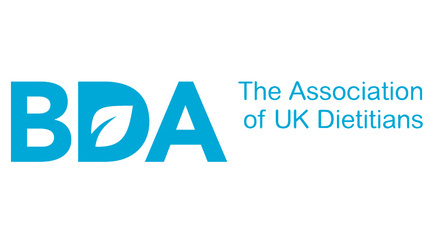Children need regular meals and snacks to give them the energy and nutrients to grow and stay healthy. Children’s nutritional needs change as they get older, so it is important to be aware of these changes. This Food Fact Sheet will help you ensure your child is eating the right food, whatever age they are.

How can I encourage my child to eat more healthily?
It’s not just about what your child eats, but also the environment around them when they are eating. When children eat with other members of the family and have the same meals, this encourages children to enjoy a variety of foods. If you can, try to sit down and eat meals as a family, without the distractions of the television or computer games.
Snacking can also affect a child's eating habits and can mean that they don’t have a balanced diet. Try to keep snacking to twice per day and opt for fruit and vegetables, in place of snacks high in fat, salt and sugar.
Food and eating should be enjoyable and fun! Children love to get involved. Take them to the shops to help choose different foods. Let them help with cooking, by putting foods in the pan or help with chopping up soft foods with close supervision. Make sure you also talk about healthy eating at home, as this will create a positive relationship for your child in relation to food.
What types of food should children eat?
Children under five years are growing rapidly and have high requirements for energy (kcals). This energy needs to come from nutritious foods. Children over the age of five should follow a healthy diet suitable for all the family.
The nutrients children need are found in these four groups. These foods should all be offered every day:
1. Starchy carbohydrates
Each meal should be based on foods from this group and these foods provide energy. These foods include; bread, potatoes, pasta, rice, breakfast cereals and grains such as couscous and quinoa. For children who are over five-years-old, wholegrain varieties are a better option. These are healthier and more filling.
2. Fruit and vegetables
Aim for five portions of fruit and vegetables every day. Fruit and vegetables provide lots of vitamins which can help to prevent coughs and colds. They also contain fibre for good bowel health. Fruit & vegetables can be fresh, frozen, tinned (in their own juice) or dried. Fresh fruit juice also counts towards one portion per day but should be given alongside mealtimes. Try and include both fruit and vegetables at main meals, fruit can be used as a snack or to make smoothies.
3. Calcium-containing foods
This group provides children with protein and calcium. This is important for growth and healthy bone and teeth development. Products such as milk, cheese, yoghurt and fromage frais are good options. Your child should ideally aim for three servings of calcium-rich food every day - for example, a 150ml glass of milk, a small pot of yoghurt and a small matchbox-sized piece of cheese. Non-dairy alternatives to cow’s milk can be given from six months in food and from 12 months as a main drink.
If you do choose plant-based alternatives, our vegetarian, vegan and plant-based fact sheet explains some of the key nutrients you need to be aware of. You should make sure that these milks contain 120mg of calcium per 100mls and also have around 55-60kcals per 100mls.
If you need more advice, talk to a health professional. Children under two years should have full fat milk and dairy foods. Semi-skimmed milk can be introduced from two years if they are growing well.
4. Protein and iron
Meat, fish, eggs, nuts, pulses (like beans, lentils and peas), and foods made from pulses (like tofu, hummus and soya mince) are excellent sources of protein and iron. Protein is needed for growth and iron is needed to prevent anaemia; a common condition seen in children. A variety of protein rich foods should be given at least twice per day.
Should I give my children food and drink high in fat and/or sugar?
Foods which are high in sugar and fat will provide extra energy but few nutrients.
This group of foods includes biscuits, cake, ice cream, sweets, chocolate, condiments such as ketchup, savoury snacks such as crisps, chips and sugary drinks.
High sugar intakes often lead to tooth decay and can lead to obesity in children. It is important to avoid giving your child frequent sugary drinks, snacks or sweets to protect their teeth and overall health. If you want to give them something sugary, it is best to limit these to twice per week or at mealtimes.
Healthy cooking methods
Changing your cooking methods can help to reduce the amount of fat in your child’s food. If you fry foods, why not try grilling, steaming or baking foods instead? This will reduce the fat content. You could also reduce the fat by adding less butter to mashed potato or on bread and using less oil in cooking. Using a spray bottle can help to reduce oil use.
Meal structure
Children should be offered three meals per day with two small snacks in between. Breakfast is a really important meal, it is a great way to help children meet their daily vitamin and mineral requirements. Breakfast options such as cereals tend to have extra vitamins and minerals added.
Children who have breakfast have been shown to concentrate better throughout the morning in school.
At lunch and evening meal time, offer children a variety of different foods and each day. You should offer different foods each mealtime. By eating a variety of foods, children can get a range of different nutrients.
Drinks
Keeping hydrated is important too. Some families find putting a jug of water on the table at mealtimes encourages the whole family to have a glass.
The best drinks for children are water and milk as they will not damage teeth. Fizzy drinks and sugary squash/cordial can provide excess energy and lead to unnecessary weight gain.
Pure fruit juice and smoothies provide quite a lot of sugar and should only be offered once per day. Dilute any sweet drinks with water – one part squash to ten parts water. If fresh juice, give half pure juice/half water for children under five.
Drinks should be offered to children at each mealtime and one or two drinks should be given in between. It is a good idea to offer extra drinks when the weather is hot and during sports.
Tea is not recommended for children as it reduces iron absorption. Try to offer warm milk instead.
Salty foods
Children do not need salt added to their food – try using herbs and spices instead. It is a good idea to limit salty snacks like crisps and reduce the amount of processed salty foods such as ready meals and processed meats.
Does my child need a daily vitamin?
All children aged six months to four years should be given a supplement containing vitamins A, C and D, such as Healthy Start vitamin drops.
All children over the age of one should have a vitamin containing 10 micrograms of vitamin D, especially during autumn and winter. For more information on vitamin D, see the BDA Food Fact Sheet on this topic.
Top tips
- Be aware of your child’s changing nutritional needs as they get older
- Creating a good eating environment will encourage children to try more foods
- Try to limit snacking and opt for fruit and veg
- Meals should be based on starchy carbohydrates such as potatoes, pasta, rice and wholegrain cereals
- Choose healthy cooking methods like grilling or baking to limit fats
- Avoid salty snacks and try to reduce ready meals and processed meats that may contain more salt
- Remember to ensure your child is well hydrated
Source(s)
British Nutrition Foundation (2021) [online] Available at: https://www.nutrition.org.uk/life-stages/toddlers-and-pre-school/ [Accessed on 28/11/2021]
Caroline Walker Trust (2007) [online] Available at: www.cwt.org.uk [Accessed 28/11/2021]
Infant and Toddler Forum (2014) [online] Available at: https://infantandtoddlerforum.org/toddlers-to-preschool/portion-sizes-for-toddlers/toddler-portion-sizes-table/#.UtUYSNJdVrI [Accessed 28/11/2021]
NHS Choices (nd) [online] Available at: www.nhs.uk/LiveWell/Childhealth6-15/Pages/Childhealth615home.aspx [Accessed 28/11/2021]
Shaw, V. and Lawson, M., (2007) Clinical Paediatric Dietetics 3rd Ed. Oxford: Blackwell







